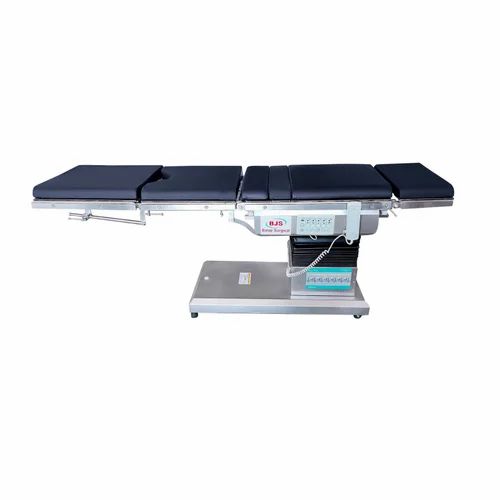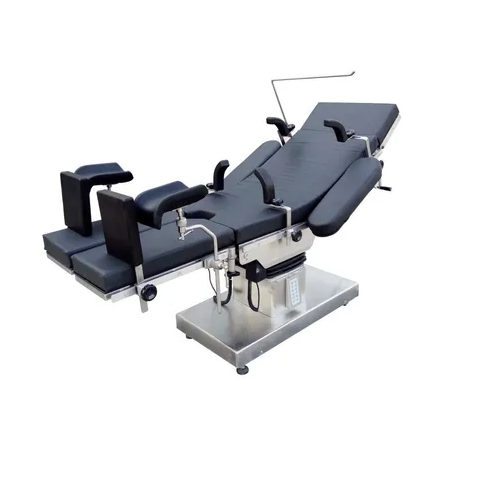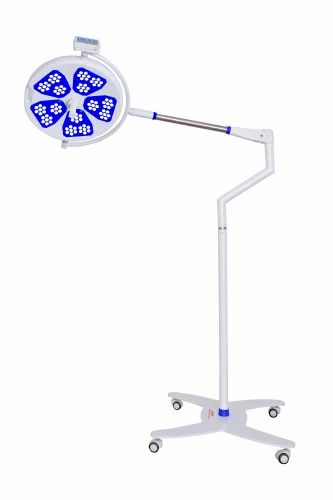
What is an Operating Table? Types, Features, and Uses Explained
In every hospital and surgical center, the operating table is a crucial piece of equipment. It is designed to support patients during surgeries, ensuring the comfort of the patient while providing surgeons with optimal access to perform procedures efficiently. A high-quality operating table can make a significant difference in the success of surgical procedures, which is why hospitals rely on trusted Operating Table manufacturers in Delhi and suppliers across India. In this article, we will explain what an operating table is, its types, key features, and various uses. Whether you are a healthcare professional, hospital administrator, or someone curious about medical equipment, this guide will provide easy-to-understand insights.O
What is an Operating Table?
An operating table, also known as a surgical table, is a specially designed platform used in operating rooms to position and support patients during surgical procedures. It is engineered to offer stability, flexibility, and precise adjustments to suit different types of surgeries, from minor procedures to major operations. Operating tables are made using high-grade materials like stainless steel and durable polymers, ensuring hygiene, durability, and resistance to corrosion. Advanced models come with hydraulic, electric, or manual mechanisms that allow smooth positioning of patients.
Types of Operating Tables
Operating tables vary depending on the type of surgery and the specific requirements of the operating room. Here are the most common types:
1. General Operating Tables
These are versatile tables suitable for most types of surgeries. They allow standard movements like height adjustment, tilting, and lateral rotation. General tables are widely used in small and mid-sized hospitals.
2. Specialized Operating Tables
Some surgeries require tables tailored to specific procedures. Examples include:
- Orthopedic Tables: Designed for bone surgeries, equipped with attachments for limbs and traction devices.
- Urology Tables: Ideal for procedures involving urinary and reproductive systems, with adjustable sections for patient comfort.
- Gynecology Tables: Equipped with stirrups and specialized supports for gynecological procedures.
- Neurosurgery Tables: Provide precise positioning, head stabilization, and flexibility for brain and spine surgeries.
3. Pediatric Operating Tables
Specifically designed for children, these tables are smaller, lighter, and come with additional safety features to support pediatric patients during surgery.
4. Electric and Hydraulic Operating Tables
These modern tables allow smooth movement adjustments through electric or hydraulic controls, making it easier for surgeons to position patients accurately.
Key Features of an Operating Table
Choosing the right operating table depends on the features that ensure both patient safety and surgical efficiency. Here are some essential features:
1. Height Adjustment
Operating tables come with adjustable heights to help surgeons maintain ergonomically correct positions during procedures, reducing fatigue.
2. Tilting and Trendelenburg Function
Tables often allow tilting forward, backward, or sideways. The Trendelenburg and reverse Trendelenburg positions are critical for certain abdominal and cardiac surgeries.
3. Movable Sections
Many tables have sections that can move independently, like the backrest, leg rest, and head section, providing maximum flexibility during complex procedures.
4. Load Capacity
High-quality tables are designed to support patients of different weights safely, with robust construction ensuring stability.
5. Easy Cleaning and Sterilization
Operating tables are made of materials that can withstand regular cleaning with disinfectants, maintaining high standards of hygiene in operating rooms.
6. Radiolucent Tabletops
Some tables have radiolucent surfaces that allow X-rays and imaging during surgery without moving the patient, improving efficiency and accuracy.
Uses of an Operating Table
The primary use of an operating table is to provide a stable and adjustable platform for patients during surgeries. Some of the key applications include:
- Surgical Procedures: From minor operations to complex surgeries in orthopedics, neurology, gynecology, and cardiology.
- Patient Positioning: Ensures proper alignment and accessibility for the surgical team.
- Emergency Operations: Quick adjustments and mobility allow surgeons to respond effectively in critical situations.
- Diagnostic Procedures: Certain tables support imaging devices for intraoperative diagnostics.
By offering flexibility, stability, and safety, an operating table plays a central role in improving surgical outcomes.
Choosing the Right Operating Table
When selecting an operating table for a hospital or surgical center, consider the following factors:
- Type of Surgeries Performed: Different procedures may require specialized tables.
- Durability and Quality: High-quality materials and construction ensure long-term reliability.
- Ease of Adjustment: Electric or hydraulic tables save time and reduce manual effort.
- Patient Safety Features: Lockable wheels, safety straps, and stable construction are essential.
- Support and Maintenance: Opt for trusted Operating Table suppliers in India who provide installation and after-sales support.
Trusted Operating Table Manufacturers and Suppliers
India has several reputable Operating Table Exporters in India and local suppliers offering a wide range of surgical tables. Companies like Balaji Surgical provide premium-quality operating tables that combine advanced features with affordability. By choosing experienced OT tables manufacturers, hospitals can ensure durable, reliable, and safe solutions for their operating rooms. For those seeking high-quality surgical tables, it is essential to select certified manufacturers who can provide customization options, timely delivery, and ongoing technical support.
Conclusion
An operating table is more than just a piece of furniture; it is a critical tool that ensures patient safety, surgical precision, and procedural efficiency. From general-purpose tables to specialized models, each type serves a unique role in modern healthcare facilities. When choosing an operating table, focus on durability, adjustability, and features that enhance both patient comfort and surgical outcomes. Trusted Ot Tables Manufacturers like Balaji Surgical ensure hospitals have access to reliable, high-quality tables designed to meet the demanding needs of today’s surgical environments. Investing in the right operating table can transform your operating room, supporting medical professionals and enhancing patient care standards.




